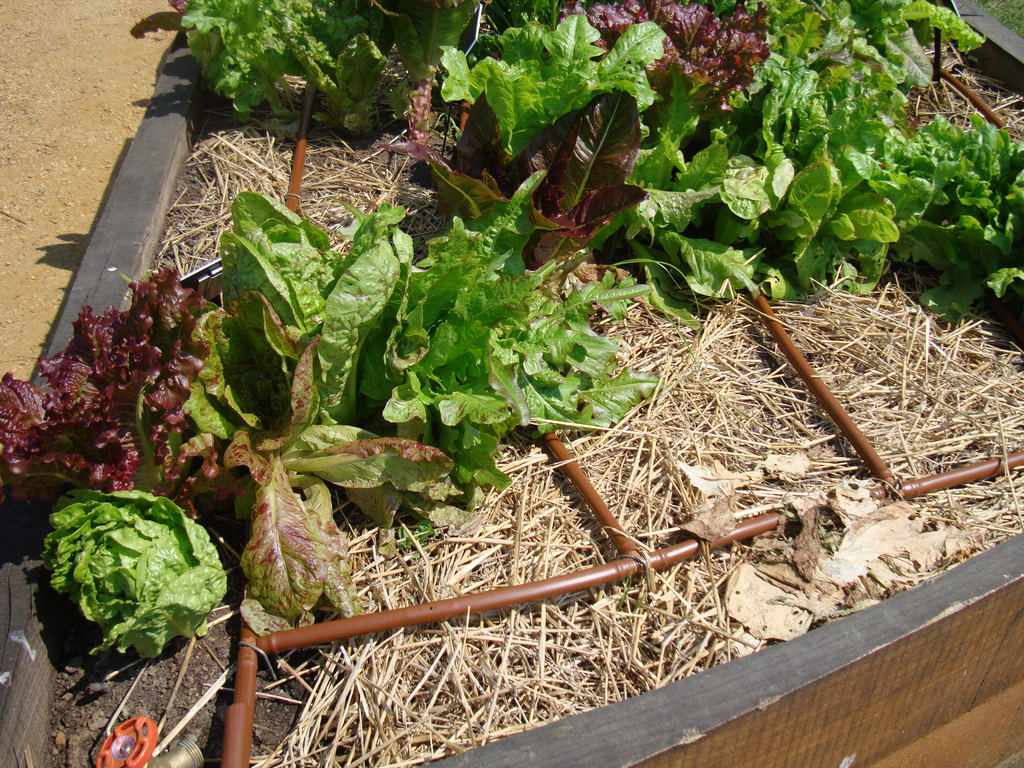How often and how long should I drip irrigate my raised bed vegetable garden?
By Donna McClay
Question: I recently converted to drip irrigation in my raised bed vegetable garden. How often and how long should I be watering?
Answer:
The simple answer is: It depends! There are several factors affecting how often and how long to water vegetables in raised beds:
- What time of year is it?
- Where do you live – inland or on the coast?
- What types of vegetables are you growing?
- Is the bed properly amended to allow for maximum water retention?
- What is the layout of the drip system in the raised bed?
- What is the flow rate (in gallons per hour) of the emitters that are installed?
Our Mediterranean climate in San Diego County affords us the pleasure of year-round vegetable gardening. You need to water longer and more often in the hot summer months (maybe even every day) than in winter months during our rainy season (occasionally to weekly), depending on whether you live in the hotter inland valleys or milder coastal areas.
The basic rule of thumb is if the top one to two inches of soil are dry – it’s time to water. If the plants wilt, you need to increase the water; if they are strong and sturdy, you are good to go. The goal is to maintain an evenly moist soil environment without drowning the roots. That means not allowing the soil to dry out completely between watering cycles, but not watering so much that you have soggy beds. Plants that wilt in the heat of the day but recover by morning have heat stress and do not need to be watered. A moisture meter sold at garden supply stores is a low cost method to help you determine when your vegetables need water.
Ideally, a drip system with an automatic timer that can be adjusted seasonally is your best bet for raised bed irrigation and will minimize water waste. Before you plant – research the types of vegetables and their specific water needs for that time of year (see: https://www.mastergardenersd.org/vegetable-plantingguide and https://www.mastergardenersd.org/wp-content/uploads/2020/04/San-Diego-Vegetable-Planting-Guide.pdf). Be sure you have added enough organic material to replace the nutrients between planting seasons and improve water retention. Seeds and vegetable starts will need more water than mature plants at first to establish a strong root system, so you’ll have to adjust accordingly.
The University of California Master Gardener Program has developed a handy drip-irrigation calculator to help you estimate how much water your raised beds need. This handy guide can be found at: https://ucanr.edu/sites/scmg/files/185639.pdf. The recommendation is to apply one inch of water across the surface of the raised bed per week – or 0.623 gallons per square foot. A detailed worksheet is included to help you find the right answer for your raised beds.
There is no “one size fits all” answer to how long and how much to water. We suggest you keep a log of your irrigation schedule so you can see how the plants respond to longer or shorter irrigation cycles, and make the necessary adjustments. Set the irrigation timer for early mornings to minimize evaporation and allow the foliage to dry out before the sun sets which will minimize the potential for disease. Recording your results will help you remember what you did the previous year.
Donna McClay has been a UCCE Master Gardener since 2018


